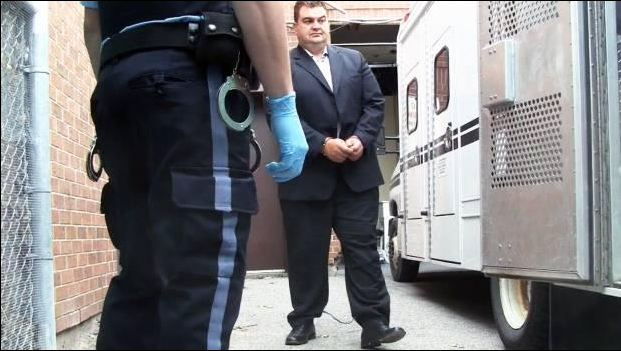Like this article? Chip in to keep stories like these coming.
![]()
We’ve seen that Elections Canada complaints data indicate that harassment calls made up just over half of a total of more than 1.1 million fraudulent phone calls received by Canadian voters in 261 of our 308 federal ridings during the 2011 election. Those late-night harassment calls seem to have gone out, for the most part, to people with a record of supporting the Liberal Party. But can we be sure that this was not, as Conservative ethics spokesperson Dean Del Mastro insisted when the matter came up in Question Period, just an indication of Liberal Party incompetence?
Del Mastro’s claim is refuted by three converging kinds of evidence.
First, Elections Canada’s investigator in Guelph, the only riding in which anything close to a thorough investigation was carried out, obtained a copy of an actual harassment robocall. This robocall is a clumsy-sounding pro-Liberal message, spoken in what the investigator, Allan Mathews, thought was a machine-generated voice, to which the Conservative-Party-affiliated voice-broadcaster to whose computer-bank it had been uploaded could attach a spoofed call-back number: that of the Guelph Liberal campaign office. It had been scheduled to be sent to a list of phone numbers in Guelph during the night of May 1, 2011, but was not used. And who prepared this message? The same group which, working on the computers in the Conservative Party’s Guelph campaign office, was also responsible for the infamous “Pierre Poutine” misinformation robocalls.
Del Mastro is refuted, secondly, by the fact that recipients of harassment calls recurrently described them as “rude,” and the calls were often also malicious. Liberal MPs in the Montréal riding of Mount Royal, the Toronto ridings of Eglinton-Lawrence and St. Paul’s, and the Manitoba riding of Winnipeg South Centre received angry complaints from Jewish voters about calls on the sabbath and, on April 18 and 19, during the Pesach or Passover seder — though the campaigns of Irwin Cotler, Joe Volpe, Carolyn Bennett, and Anita Neville had been careful to avoid offending religious sensibilities with any campaign activities on those days. Elsewhere (for example in Ted Hsu’s riding of Kingston and the Islands), there were surges of complaints from Christian voters who had been harassed by fake calls on Easter Sunday, April 24, a day on which Janyce McGregor of CBC News reported that Hsu “had in fact suspended all campaigning.”
In other cases, the malice took the form of what seems a deliberate attempt to arouse ethnic tensions: in Egmont, P.E.I., where the Liberal candidate was Guy Gallant, an Acadian, the calls were made in a mock-French accent; in Oakville, Ontario, the calls underlined the ethnicity of Liberal candidate Max Khan by imitating a Pakistani accent in a manner that Khan’s campaign manager denounced as “deliberately mocking” and “racist.” In at least two ridings, moreover, Niagara Falls and Haldimand-Norfolk, late-night harassment calls directly impersonated Liberal candidates, in the latter case by splicing a recording of candidate Bob Speller’s own voice into the offending automated calls.
It should be clear how ludicrous it was of Yves Côté, the Commissioner of Canada Elections, to claim in April 2014, in his Summary Investigation Report on Robocalls, that except in the riding of Guelph his investigators could find no evidence of criminal intention. Are we to believe, then, that disparate unconnected groups of “pranksters,” in most of the country’s electoral districts, just happened upon the same method of discrediting political candidates by targeting their supporters with, on average, a couple of thousand late-night calls per riding, and that the candidates who were the objects of these innocent jests just happened, in most cases, to be running for the Liberal Party, and in the other cases were running for the NDP?
Would one have to be, in Paul Wells’s charming phrase, a “flatulent crank” to think otherwise?
Ironically, Côté’s Summary Investigation Report provides a third refutation of Del Mastro’s claim — in the form of a piece of data that is at the same time clear evidence of intentionality. Côté informs us that although Elections Canada documented 2,448 complaints, these came from just 1,726 complainants. This fact — though he passes over it without comment — is hugely revealing.
Since the complaints were prompted nearly evenly by harassment and misinformation calls, what it tells us is that 42 per cent of the complainants received both kinds of calls. This, in turn, indicates a common intention behind the two kinds of calls — it shows, in other words, that the people responsible for the misinformation calls had also been able to target many of the same recipients with harassment calls. (How could Côté have missed the significance of this 42 per cent overlap? Had Elections Canada, in some spasm of Harperite loathing of scientific rationality, fired all its statisticians?)
So what, precisely, is the evidence of responsibility for the 2011 telephone fraud? And if the recipients of fraudulent telephone calls were targeted, how was it done? As we’ll see in my next essay, there’s very strong evidence that the key tool in the targeting of voters for vote-suppression calls was the Conservative Party’s tightly controlled central database, CIMS, the Constituency Information Management System. The evidence of voter targeting is, at the same time, an important part of the evidence that the Conservative Party of Canada was responsible for the entire criminal enterprise.
Like this article? Chip in to keep stories like these coming.
![]()
Image: Twitter



